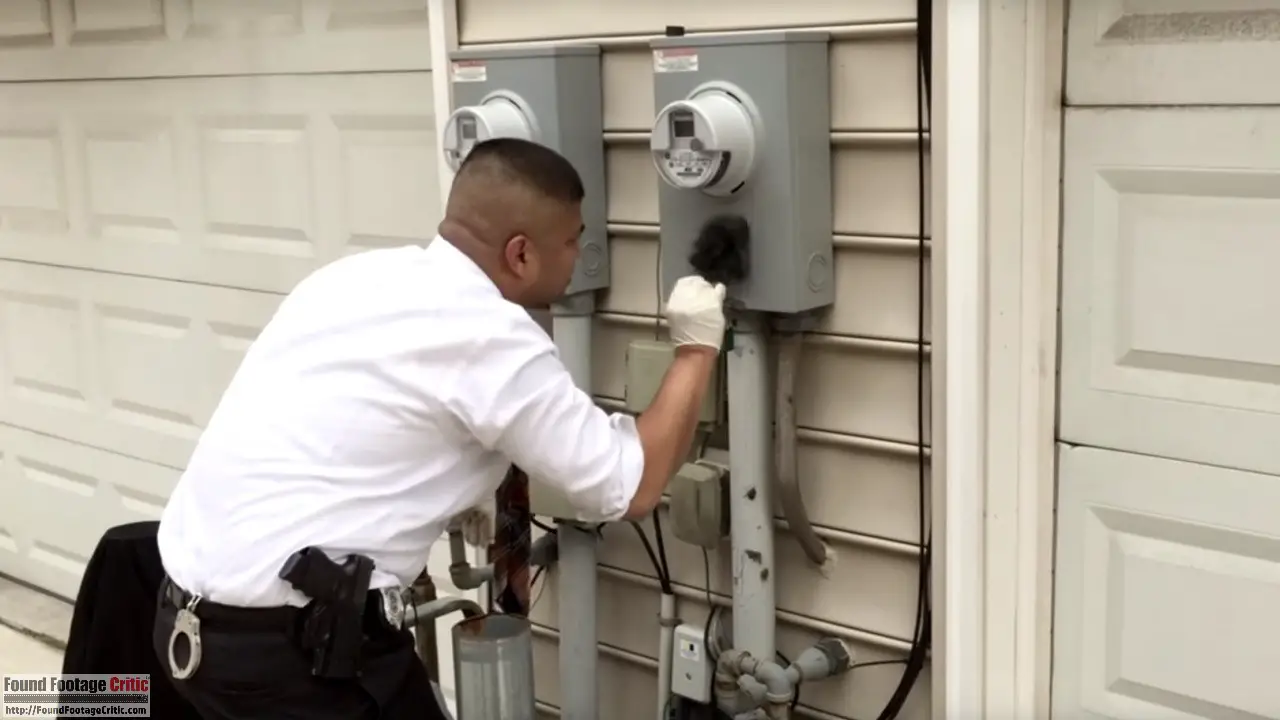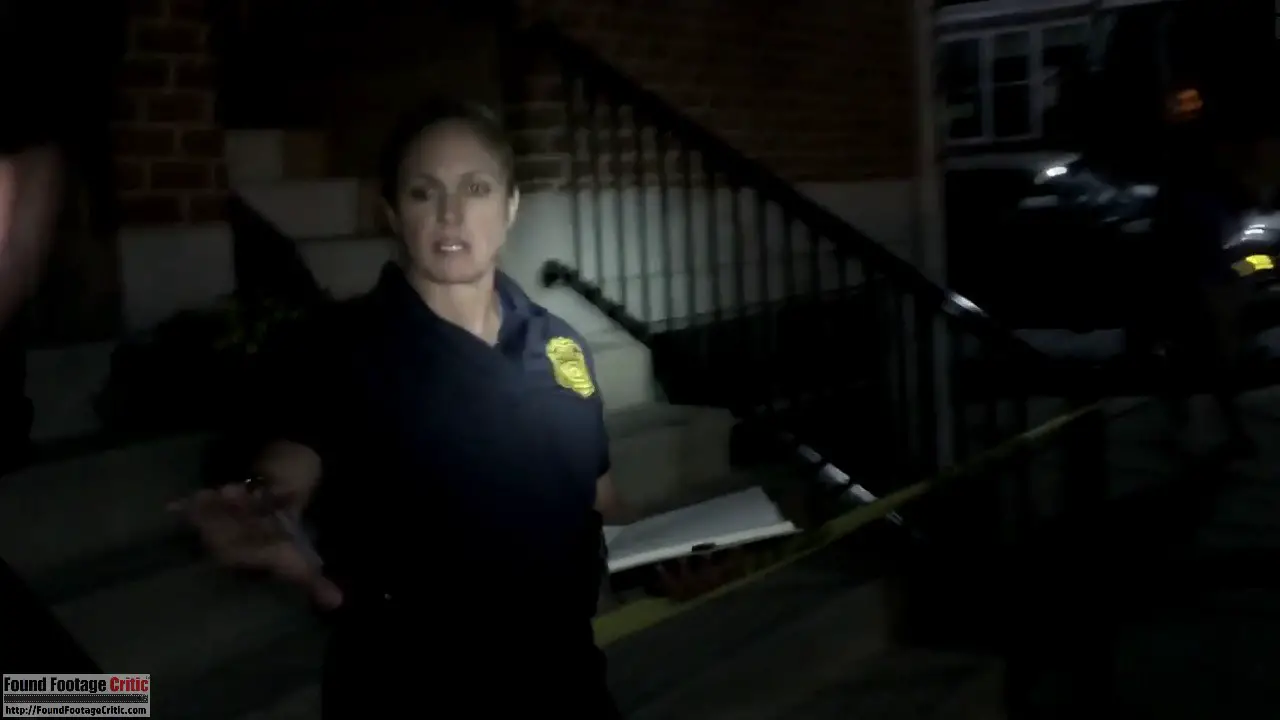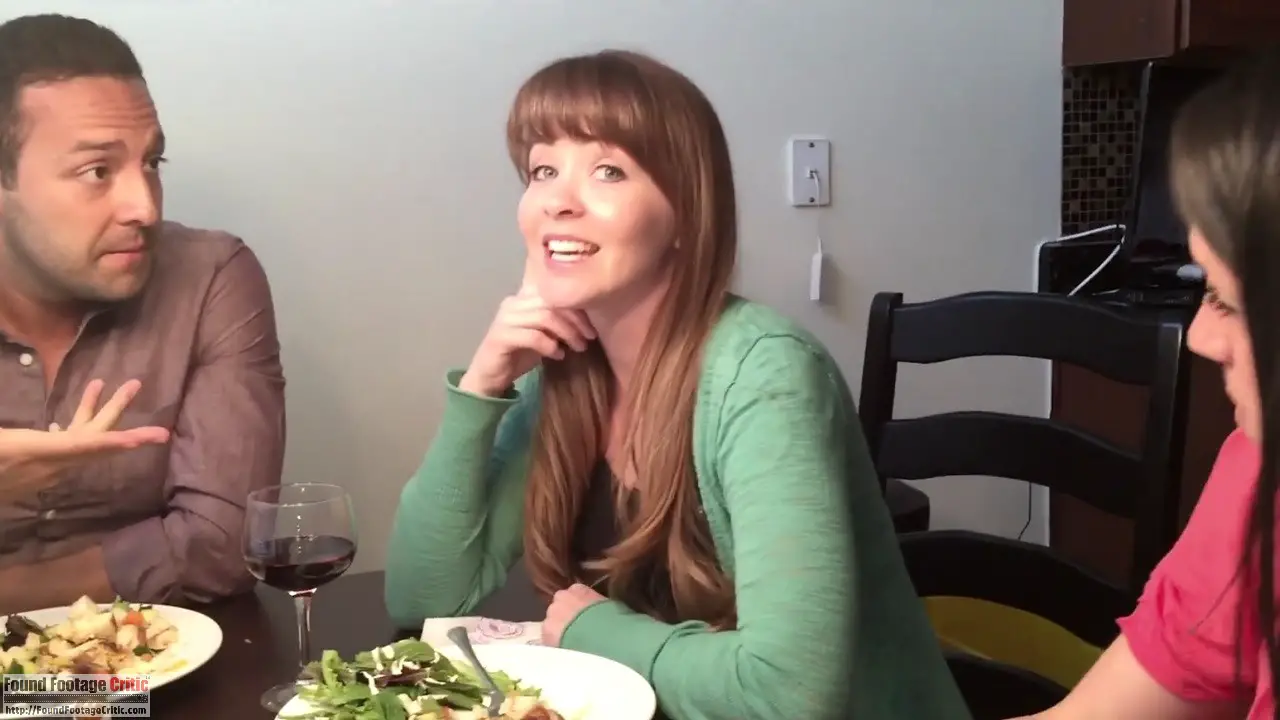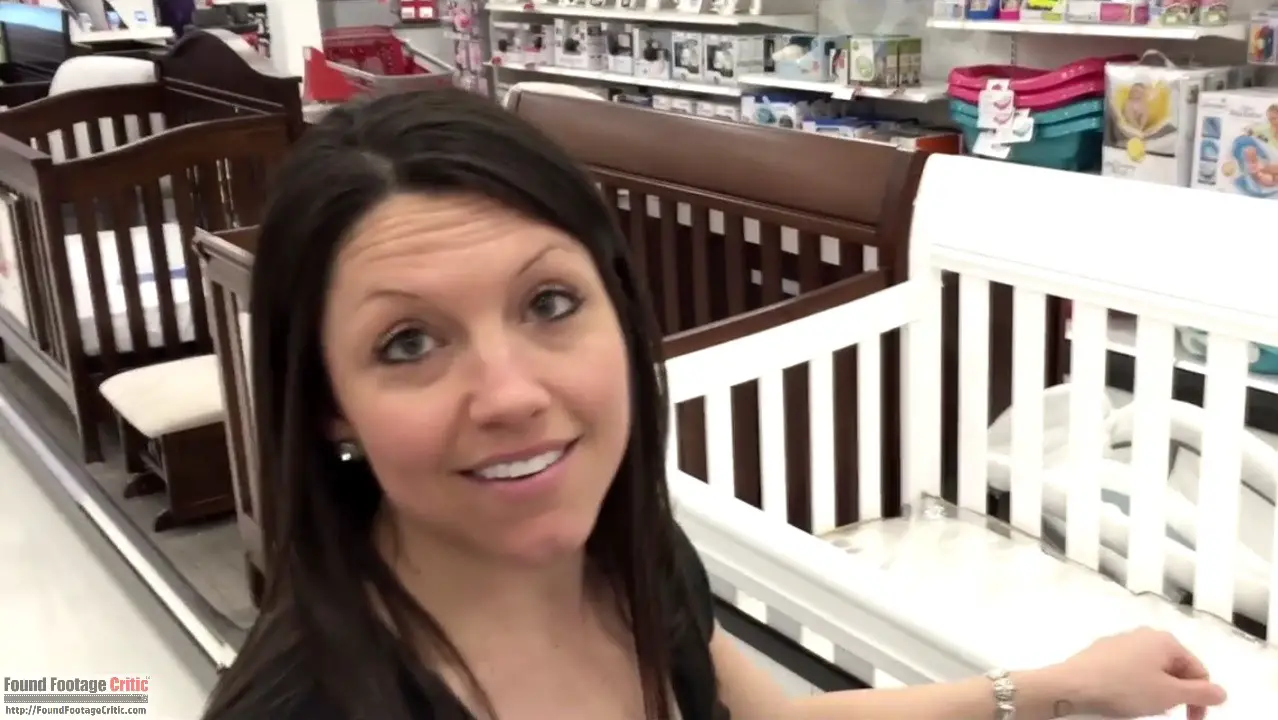 The Break-In is a 2016 found footage horror film written and directed by Justin Doescher that follows a couple that are trying their best to cope with news of a home intruder victimizing their neighborhood who may have his sights set on their home as his next target.
The Break-In is a 2016 found footage horror film written and directed by Justin Doescher that follows a couple that are trying their best to cope with news of a home intruder victimizing their neighborhood who may have his sights set on their home as his next target.
The film opens with a date stamp reading “September 13, 2011,” followed by two friends who pass by a house barricaded with police tape and surrounded by police cars and officers – the house belongs to their friends Jeff and Melissa, and from the scene outside, something very bad had just taken place.
From here the film transitions four days earlier where we meet the two main protagonists, Jeff (Justin Doescher) and Melissa (Maggie Binkley), a couple who recently purchased a townhouse in a residential neighborhood. We come to learn that their neighbors Steve (Juan Veiza) and Lisa (Missy Merry) live in the adjoining townhouse. The two couples are friends from college and they both purchased adjoining residences to stay close to one another.
After hearing stories of several neighborhood break-ins, Jeff installs a new electronic lock system on his door and retrofits his house with surveillance cameras. The vast majority of the film is captured from the perspective of Jeff’s smart phone and four fixed surveillance cameras in his home.
Over the days that follow Jeff hears strange noises in his house at night and on a couple of occasions the house alarm is set off, prompting the couple to believe that they are the next target of the neighborhood intruder. Matters go from bad to worse as the noises escalate, a stranger is seen roaming outside their home, and the tension rises to epic proportions.
Acting and Plot
Justin Doescher (as Jeff) does a good job portraying the concerned homeowner who is also looking out for the best interests of his wife and unborn child. Maggie Binkley (as Melissa) convincingly plays the role of a woman who is overjoyed with her pregnancy, while expressing a growing concern over her husband’s obsession with filming and the unseen intruder at large. Juan Veiza and Missy Merry perform admirably as the neighbors and close friends of the two main protagonists. Ted Fernandez does a great job as Detective Garcia investigating Jeff’s assertion that his household is being stalked by a home intruder. While the acting in The Break-In is generally good, Doescher’s dialog sometimes comes across as serving the viewers more than the on-screen characters with whom he’s directly speaking to while filming, which detracts somewhat from the overall immersiveness of the film.
Overall, the plot is interesting and has the potential to touch a nerve for those viewers who may have had a similar experience with a burglar or home invasion in their own lives. The idea of four long-term friends purchasing adjoining townhouses is a novel approach to the film, lending additional texture to the story. Melissa’s pregnancy and the footage captured in support of that sub-plot, including scenes such as the baby-shopping, adds an additional layer of realism. The Break-In also has a twist ending that is sure to surprise many viewers.
Found Footage Purity
The found footage purity measures how well a film maintains the illusion of actual found footage. While the The Break-In makes a valiant attempt to preserve the found footage integrity of the film, the end-product includes cinematic and technical elements that go against the grain of the core rules of the found footage genre, including background music, static between scene breaks, distorted smart phone video whenever the house garage door opens and closes, and the perhaps first ever found footage dream sequence.
The film includes overt background music that only presents itself when the antagonist is about to make an appearance on camera or do something that alarms the protagonists. Since the film contains absolutely no soundtrack other than the brief scenes where something is about to happen, the music is alarmingly present, and may negatively impact the found footage conceit of the film for some viewers. More so, the overtness of the background music diffuses the build-up of tension since the film makes it absolutely clear that nothing will happen until the music starts playing and all threats instantly end when the music stops.
Technically speaking, if The Break-In were actual found footage, there would be no background music unless the person who edited the footage added the music in post-production. Since the film is presented as police evidence, background music is not something that would make its way into the final product.
Another overly present element in the film is a static sound that presents itself between every scene break throughout the film, which may distract some viewers. Since the found footage is captured digitally from the protagonist’s smart phone and surveillance camera hard drive, there would be no static in the end product unless the sound was intentionally added in post production, which would be highly unlikely for police evidence.
A somewhat odd addition to the film are several scenes where the smart phone camera captures highly distorted video whenever recording while the garage door is in the process of opening or closing. The electrical motor from the garage door opener is incapable of causing such interference, begging the question as to why this video artifact is present.
Finally, The Break-In includes a scene near the climactic ending that can only be described as a dream sequence shot in the found footage format – due to potential spoilers, we can’t discuss this particular scene further without revealing key elements of the plot.
Unfortunately, the cumulative impact of these technical issues strains the suspension of disbelief The Break-In strives to achieve, but the entertaining plot and acting compensate to a degree, still keeping the film enjoyable to watch.
Filming Reason and Cinematography
The all-important filming reason used to justify why a feature length’s worth of found footage is captured must be plausible enough to maintain the illusion of realism in a found footage film. At the onset of The Break-In, the main protagonist, Jeff, states matter-of-factly that he’s recording everything to document the months leading up to the birth of his child. Later on in the film, Jeff records for the added purpose of capturing proof and documenting evidence in the hopes of apprehending the supposed intruder terrorizing his neighborhood. On its face, these are valid reasons for filming, but the actual events that are filmed and the circumstances under which they are filmed raises questions.
In one particular scene Jeff is driving to someone’s house and is holding his smart phone camera at head height in one hand while steering with his other hand. While it’s conceivable that someone may film in this manner when they are in the immediate proximity of their destination, Jeff drives one-handed while holding his smart phone at head height in his other hand for the entire trip, which is clearly a very long drive that includes navigating on major highways, tunnels, and other busy roads and negotiating turns en route to his destination. This reviewer found himself asking why this material was recorded, especially given the sheer awkwardness of holding up the camera for such a long distance and driving with one hand when nothing noteworthy is expected to happen. Another similarly choreographed scene include Jeff holding the smart phone camera at head height and filming while jogging with Melissa. These two particular scenes (as well as others) do not come across as consistent with the motivations of the protagonist nor do they further the plot.
Despite the fact that the protagonists’ home has four surveillance cameras, Director Justin Doescher opts to use Jeff’s smart phone to capture the vast majority of indoor video. The Break-In would have benefited by leveraging the surveillance cameras to capture most of the indoor video. This alternate approach would have lent more variety to the footage and made the filming come across as much more organic for those scenes – the filming reason for surveillance footage is self-evident and is rarely scrutinized. Scenes such as the filming of the protagonists’ dinner party early on in the film would have come across as more natural if they had been captured by the surveillance cameras.








1 Comment
The acting was great but the movie was flat.